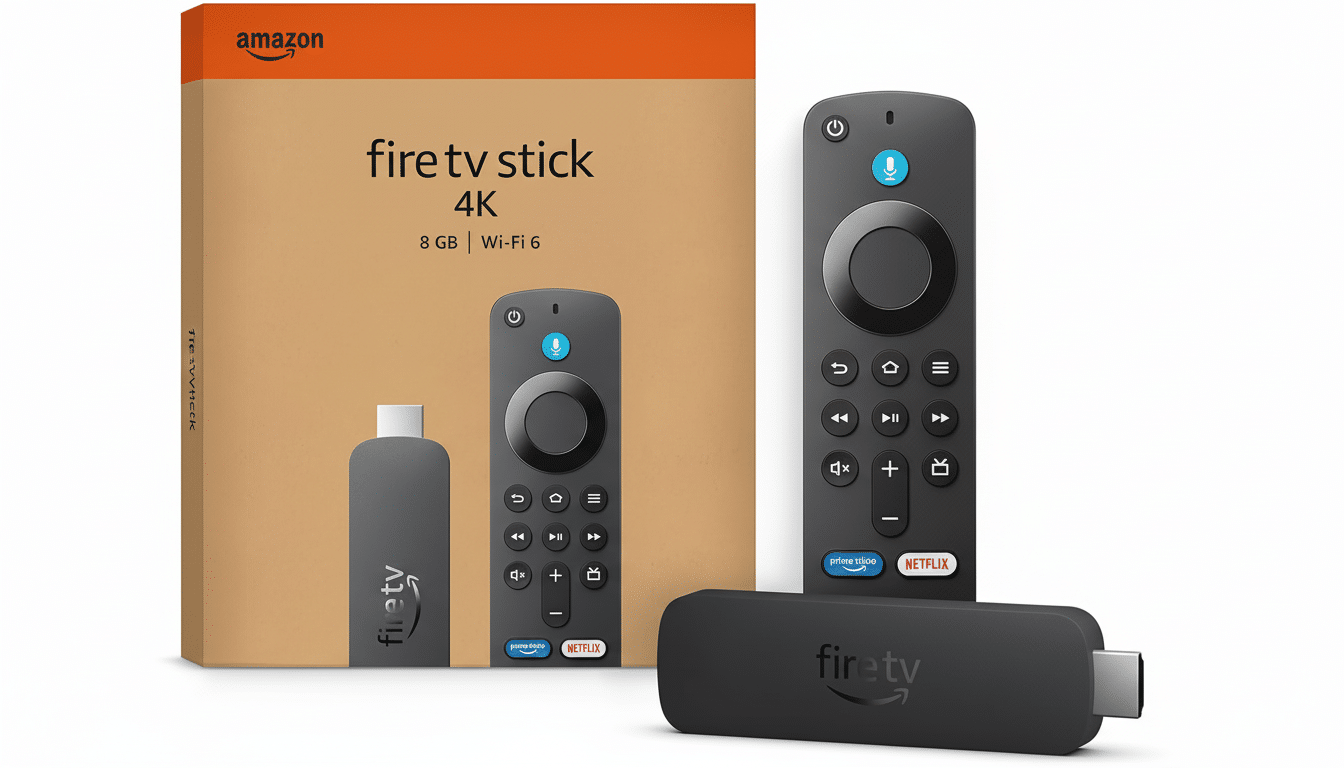Amazon has also confirmed something that many in the streaming world had long suspected: it is ditching its Android-based Fire TV software to crack down on piracy.
The new Fire TV Stick 4K Select introduces Vega OS, a Linux-based operating system crafted to prevent sideloading and direct all app installs through the Fire TV Appstore. It is a notable strategic change for one of the largest connected TV ecosystems in the world.

Why Amazon Is Ditching Android on Fire TV Devices
For years, Fire TV devices have operated on a custom version of Android, which also made it easier for users to install apps from sources outside of Amazon’s store. That openness also rendered Fire TV a sitting duck for unauthorized streaming software. Months of criticism and a spate of removals hitting sketchy third-party apps in June have led to Amazon adopting a model with all the trappings of an explicit anti-piracy tool.
The change is an effort to protect both creators and consumers from piracy, which “can create a poor experience” with potential risks like malware and fraud, Amazon said in comments reported by The Athletic, which is owned by The New York Times. The company’s actions come as the previously abandoned effort aligns with its work with the Alliance for Creativity and Entertainment, a major anti-piracy coalition supported by nearly 50 media companies. The addition of UEFA to the group highlights how live sports have become a piracy battleground.
AFTVnews reported that the device runs a Linux version of Vega rather than an Android one, which allows it to be locked down to prevent unwanted installs. The move also comes as Google itself is trying to clamp down on sideloading on Android, suggesting that the industry overall is moving away from open distribution in the living room’s biggest screen.
What Vega OS Does Differently For Users And Developers
On the Fire TV Stick 4K Select, Vega OS blocks sideloading apps from unknown sources and mandates that all consumer-viewed apps be available through the Fire TV Appstore. That policy explicitly cracks down on the gray market for third-party streaming apps that needed to be installed manually. The net result is a system that for most people will be more similar to a curated console than an all-purpose Android device.
Amazon claims that some of its verified developers won’t be disadvantaged by this new system: they’ll still be able to continue testing apps on the Vega OS, which provides a more controlled path for innovation than simply dumping out sideloading support entirely. The company also intends to integrate a similar protection to previous Fire TV devices. What exactly that might mean is an open question — a complete move over to Linux via software update from the Android (and the Bionic stack) it uses on legacy hardware right now could be pretty technically hard, so perhaps Amazon will combine tougher install rules for app developers with its current base build (based on Android), and make some kind of compromise position.

But what’s apparent is the direction of travel. In building the new stick as a Linux-first device, Amazon is communicating its long-term platform transition plan: security and rights-holder relationships and store-driven monetization over the flexibility that attracted power users to Fire TV.
Piracy Pressure: By the Numbers on Streaming Platforms
The scale of pirate streaming goes some way to explaining the combative stance. The piracy-tracking firm MUSO, which is based in the U.K., estimated that there were 216.3 billion visits to illegal piracy websites in 2024, and about half of them were associated with live TV or event-style content. One other industry estimate put the total losses for sports broadcasters at $28 million in 2022–23 alone, due to illegal streaming, a figure that is likely too conservative given indirect costs to rights valuations and subscription acquisition.
Live sports are the fulcrum. Top leagues like the NFL and English Premier League are tent poles around which subscription bundles are built and yet among the most pirated. With UEFA now part of ACE and rights fees spiraling upward, platforms that allow for even casual exposure to pirate streams are under intense pressure from partners and regulators to lock things down.
The Bigger Platform Play Behind Amazon’s Fire TV Shift
The move also aligns with a business agenda at Amazon. The company has recently tried to restrict password sharing for its video service as part of a broader effort to turn nonpaying viewers into paying ones. A tougher position on sideloading fits that strategy and brings Fire TV in line with rivals like Roku and Apple, which already limit app distribution to official stores.
The trade-offs are real. Cord cutters who enjoyed the Fire TV’s workaround-friendly nature will have fewer alternatives, and developers might encounter more resistance piling yet another Linux-based target on top of Android TVs and smart TV platforms. But for Amazon, it’s a simple calculation: fewer of the bad apps equals a cleaner security story and a platform better poised to land premium content deals.
Vega OS is a statement of purpose. By getting off Android for its new stick and closing up the installation path, Amazon is wagering that a more closed garden will appeal to studios, sports leagues, and everyone’s mom—even if that means abandoning some of its geek-tweaker past.

